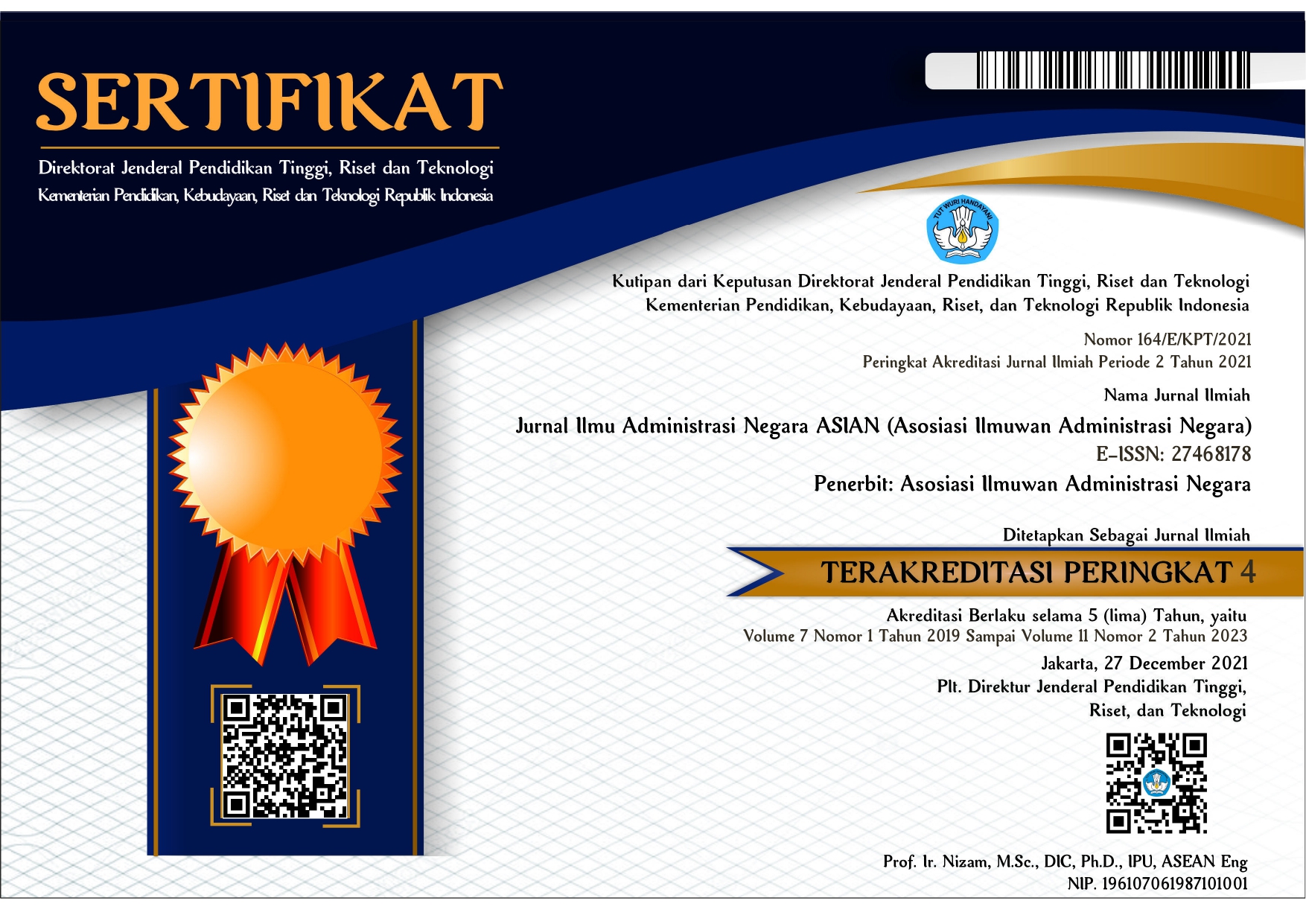Sound Governance: Model Kolaborasi Multilevel sebagai Upaya Pencegahan Korupsi dalam Pemerintahan Desa
-
 Abstract views: 2125
,
Abstract views: 2125
,
 PDF downloads: 2561
PDF downloads: 2561
Abstract
There is a direct impact between governance and corruption. They also evolve over time. For governance, the development of the concept has brought us to Sound Governance, a concept that is suitable and responds to international norms of governance. While the development concept has concluded the Sustainable Development Goals (SDGs), one of the Goals is the establishment of a strong institution. This work was conducted in the law and policy framework using regulations and public policy as the main reference for analyzing and evaluating purposes. The result has shown that implementation of Sound Governance with the adoption of Goal 16 target and indicator is the useful mean for corruption prevention and the for village governance.
Downloads
References
Coopenergy Consortium. (2015). A Guide to Multi-level Governance For Local and Regional Public Authorities A Guide to Multi-level Governance. December, 2–16.
Daniell, K. A., & Kay, A. (2017). Multi-level Governance: An Introduction. 3–33.
Eko, S. (2015). Regulasi Baru, Desa Baru: Ide, Misi, dan Semangat UU Desa. Kementerian Desa, Pembangunan Daerah Tertinggal, dan Transmigrasi Republik Indonesia.
Farazmand, A. (2004). Globalization and Governance: A Theoretical Analysis. Sound Governance : Policy and Administrative Innovations. Greenwood Publishing Group.
General Assembly, U. (2015). UN GA Resolution A/RES/70/1 Transforming our world: the 2030 Agenda for Sustainable Development.
Gibson, R. (2011). A Primer on Collaborative Multi-Level Governance, A Critical Review of Theory, Practice, and Potentials. Canadian Regional Development, May, 4.
Haeli. (2020). Penerapan Prinsip-Prinsip Good Governance pada Pemerintah Daerah Provinsi Nusa Tenggara Barat (Studi Kasus). Bestari, 1(1), 1–9.
ICW. (2018). Outlook Dana Desa 2018 Potensi Penyalahgunaan Anggaran Desa di Tahun Politik.
ICW. (2021). Perangkat Desa Dominasi Terdakwa Kasus Korupsi Dana Desa Perlu Diawasi.
IDLO. (2022). People-centred governance in a post-pandemic world.
Iskandar, A. H. (2020). SDGs Desa Percepatan Pencapaian Tujuan Pembangunan Nasional Berkelanjutan. Yayasan Pustaka Obor Indonesia.
Kementerian Desa, P. D. T. dan T., & Indonesia, R. (2012). Mengembangkan demokratisasi desa.
Pusat Edukasi Antikorupsi. (2022). Modus Korupsi yang Paling Populer di Indonesia.
Putra, F. (n.d.). Sound Governance Berakhirnya Era Good Governance.
Rahayuningtyas, D. P. A. (2017). Pengaruh Tata Kelola Dan E-Government Terhadap Korupsi. Ekutasi Jurnal Ekonomi Dan Keuangan, 1(4), 431–450.
Rahman, F. (2011). Korupsi di Tingkat Desa. Governance, 2(1).
Rizqi Yurice Prastika. (2020). Efektifitas Penerapan Good Corporate Governance (GCG) dalam Upaya Pencegahan Tindak Pidana Korupsi di PT KAI. Jurnal Idea Hukum, 6(1), 96–112.
Rofiq, A., Salim, A., Untung, B., Laksono, I., Bulan, W. R., Arifah, U., & Heryanto, S. (2017). Praktik Baik Desa dalam Implementasi Undang-Undang Desa (Vol. 91). Pusat Telaah dan Informasi Regional.
Safitri, R. (2022). Analisis Penyalahgunaan Alokasi Dana Desa oleh Kepala Desa (Studi Kasus di Desa Taman Jaya). Jurnal Petitum, 2(1), 45–55.
SDGs Desa Center. (2022). Profil Potensi dan Permasalahan Desa.
Sudarmo. (2021). SOUND GOVERNANCE: PASCA TRADITIONAL, MARKET & GOOD GOVERNANCE.
Suraji. (2008). Sejarah Panjang Korupsi di Indonesia dan Upaya Pemberantasannya, Jurnal Kebijakan dan Administrasi Publik. Jurnal Kebijakan Dan Administrasi Publik, 12(2), 135–148.
Zakariya, R. (2020). Partisipasi Masyarakat dalam Pencegahan Korupsi Dana Desa: Mengenali Modus Operandi. INTEGRITAS: Jurnal Antikorupsi, 6(2), 263–282. https://doi.org/10.32697/integritas.v6i2.670
Copyright (c) 2022 Jurnal Ilmu Administrasi Negara ASIAN (Asosiasi Ilmuwan Administrasi Negara)

This work is licensed under a Creative Commons Attribution-ShareAlike 4.0 International License.
Authors who publish with this journal agree to the following terms:
1. Copyright on any article is retained by the author(s).
2. The author grants the journal, right of first publication with the work simultaneously licensed under a Creative Commons Attribution License that allows others to share the work with an acknowledgment of the work’s authorship and initial publication in this journal.
3. Authors are able to enter into separate, additional contractual arrangements for the non-exclusive distribution of the journal’s published version of the work (e.g., post it to an institutional repository or publish it in a book), with an acknowledgment of its initial publication in this journal.
4. Authors are permitted and encouraged to post their work online (e.g., in institutional repositories or on their website) prior to and during the submission process, as it can lead to productive exchanges, as well as earlier and greater citation of published work.
5. The article and any associated published material is distributed under the Creative Commons Attribution-ShareAlike 4.0 International License








